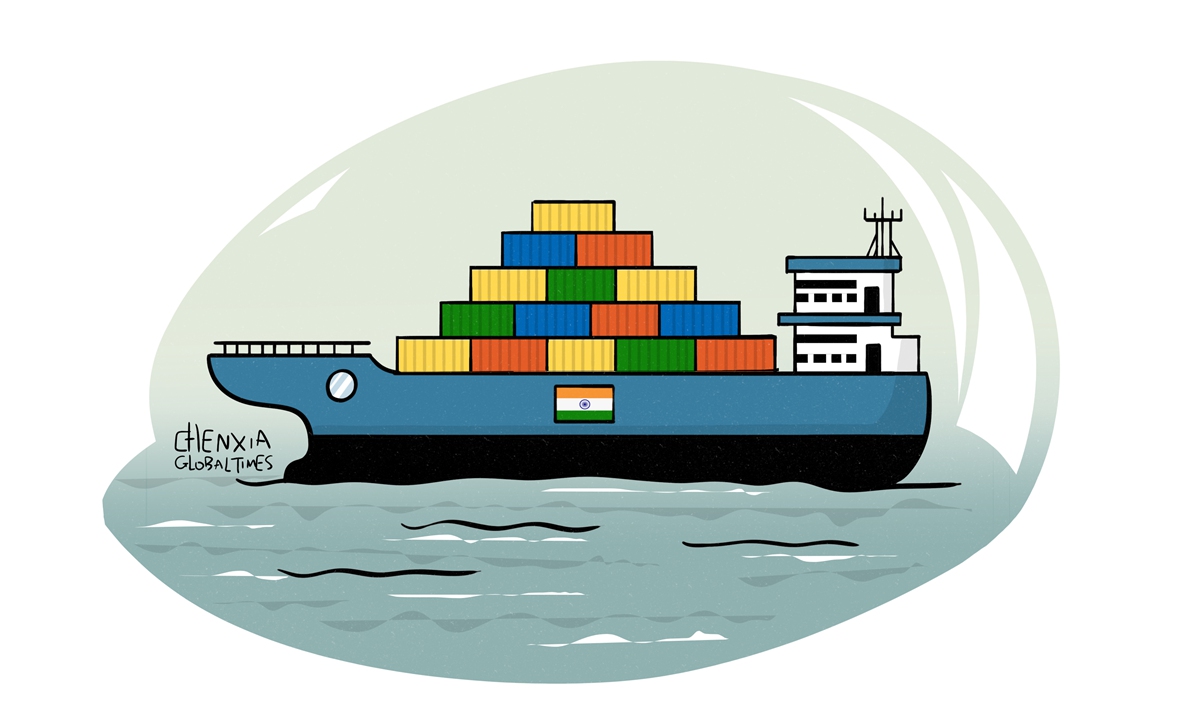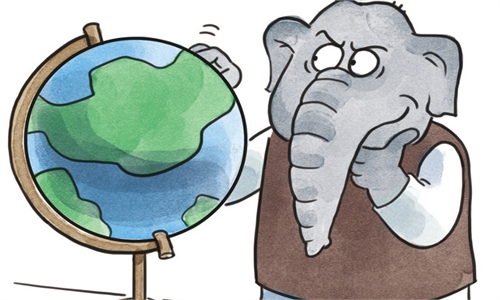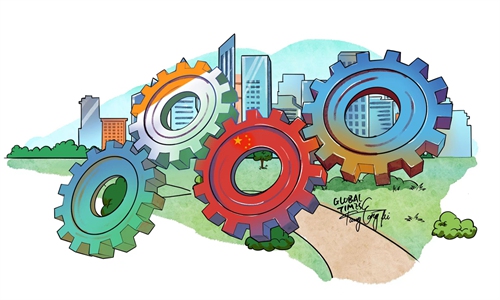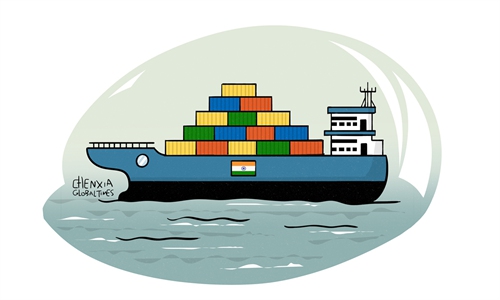COMMENTS / EXPERT ASSESSMENT
GT Voice: More China-India economic cooperation than competition

Illustration: Chen Xia/Global Times
Some Western media outlets are always hyping up South Asia as a "battleground", alleging India and China have been locked in a tussle for geo-economic influence. In fact, this only reflects the West's narrow-minded zero-sum game mentality that is not conducive to the regional peace and development.The latest example is a recent article entitled "India's plan to take on China as South Asia's favorite lender" in the Financial Times, which said India stepped up its own infrastructure lending in South Asia and the Indian Ocean, which the newspaper alleged is to counter China-proposed Belt and Road Initiative (BRI).
This is a typical case of the Western public opinion encouraging competition and rivalry between China and India. Given the fact that China-India relations encountered some problems in the past years, it is not uncommon to see some Western media outlets trying to drive a wedge between the two huge countries.
It should be pointed out that China and India are more encouraged to focus on win-win cooperation when it comes to promoting infrastructure development in the region, rather than engaging in fierce competition.
With its economic growth in recent years, India has begun to use its economic advantages to boost its influence in the region by ramped up lending or investment support for infrastructure projects in neighboring countries such as Maldives, Bhutan and Sri Lanka. This is a commendable development, especially for the development of the South Asian region.
South Asia is the most densely populated region in the world, with a total population of nearly 1.8 billion, accounting for about a quarter of the global population. Despite the region's relatively fast economic growth in the past several years, huge market potential and demographic dividend, it still has the second-highest number and proportion of the world's extreme poor population.
How to promote economic development to reduce poverty has been the biggest problem facing countries in South Asia. It is against this backdrop that under the BRI framework, China has carried out extensive and in-depth cooperation with some South Asian countries by means of investment, loans and infrastructure projects, which have produced tangible results.
Although the current development may drive some to believe that "competition between China and India have spread to the struggle for influence" in South Asia, it should be noted that South Asian countries' economic cooperation with China, India or any other country is not exclusive. If anything, infrastructure development is always conducive to regional economic development.
Therefore, India's increased participation in regional infrastructure cooperation will likely help boost the local industrial chains and supply chains, which may also be beneficial to China's investment and even bring cooperation opportunities for Chinese companies.
There is no denying that China-India relations are characterized as containing both competition and cooperation. Unfortunately, as the US spent more efforts to rope in India, some of India's political elites mistakenly believe they can benefit from a China-US feud, and they are increasingly inclined to view the relationship with China from the perspective of competition and rivalry, creating major obstacles to the development of bilateral ties. For instance, India has often politicized bilateral economic and trade cooperation, causing difficulties for normal business exchanges between their businesses.
However, going against each other is not in the interests of the people of the two countries at all. There is plenty of room for development of the two countries.
Whether China and India can keep their differences under control will be of great significance to Asia as a whole, and as the two largest developing countries in Asia, they also need to assume the corresponding responsibility to make due contributions to regional development. To play a greater role in leading the direction of the "Asian Century," India needs to maintain strategic sobriety and be vigilant toward the geopolitical pitfalls created by the West.



